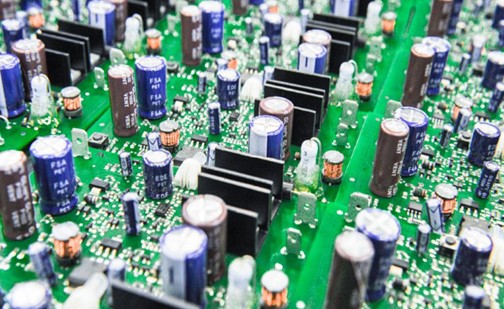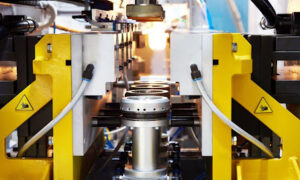In the ever-evolving world of electronics manufacturing, innovation often takes center stage. However, some traditional methods continue to play a vital role in producing reliable and durable electronic devices. One such method is through-hole PCB assembly. Despite the rise of surface-mount technology (SMT), through-hole assembly remains a critical process for many applications, particularly those requiring robust mechanical connections and high reliability. This article explores the through-hole PCB assembly process, its advantages, challenges, and its enduring relevance in modern electronics manufacturing.
What is Through-Hole PCB Assembly?
Through-hole PCB assembly is a method of mounting electronic components onto a printed circuit board (PCB) by inserting component leads through drilled holes in the board. The leads are then soldered onto pads on the opposite side of the board, creating strong mechanical and electrical connections. This technique has been widely used since the early days of electronics and remains a staple in industries where durability and reliability are paramount.
Through-hole components are typically larger than their surface-mount counterparts and include items such as connectors, transformers, and electrolytic capacitors. These components are often used in applications where mechanical stress, high power, or high voltage is involved.
The Through-Hole PCB Assembly Process
The through-hole assembly process involves several key steps:
- PCB Design and Drilling: The process begins with the design of the PCB, which includes determining the placement of through-hole components and drilling holes to accommodate their leads. The holes are typically plated with copper to ensure good electrical conductivity.
- Component Placement: Once the PCB is prepared, through-hole components are inserted into the drilled holes. This step can be done manually or with the help of automated insertion machines, depending on the complexity and volume of the project.
- Soldering: After the components are placed, the PCB undergoes soldering to secure the leads to the board. The most common soldering methods for through-hole assembly are wave soldering and hand soldering. Wave soldering involves passing the PCB over a wave of molten solder, while hand soldering is used for prototypes or low-volume production.
- Inspection and Testing: After soldering, the assembled PCB is inspected for defects such as solder bridges, cold joints, or misaligned components. Automated optical inspection (AOI) and manual inspection are commonly used to ensure quality. Functional testing is also performed to verify that the PCB operates as intended.
- Cleaning and Finishing: The final step involves cleaning the PCB to remove flux residues and other contaminants. Conformal coating or other protective finishes may be applied to enhance the board’s durability and resistance to environmental factors.
Advantages of Through-Hole PCB Assembly
- Mechanical Strength: Through-hole components form strong mechanical bonds with the PCB, making them ideal for applications subject to mechanical stress, vibration, or high temperatures. This is particularly important in industries such as automotive, aerospace, and industrial electronics.
- Reliability: The robust connections created by through-hole assembly result in highly reliable PCBs. This makes the method suitable for critical applications where failure is not an option, such as medical devices and military equipment.
- Ease of Prototyping: Through-hole components are easier to handle and solder manually, making them a popular choice for prototyping and low-volume production. Engineers and hobbyists often prefer through-hole assembly for its simplicity and accessibility.
- High Power and Voltage Handling: Through-hole components are generally larger and can handle higher power and voltage levels compared to surface-mount components. This makes them suitable for power supplies, amplifiers, and other high-power applications.
- Compatibility with Legacy Designs: Many older electronic designs rely on through-hole components, and transitioning to surface-mount technology may not always be feasible. Through-hole assembly allows manufacturers to continue producing and maintaining legacy systems.
Challenges of Through-Hole PCB Assembly
While through-hole assembly offers numerous benefits, it also presents certain challenges:
- Size and Weight: Through-hole components are larger and heavier than surface-mount components, which can limit their use in compact or lightweight devices. This is a significant drawback in industries like consumer electronics, where miniaturization is a key trend.
- Higher Costs: The through-hole assembly process is generally more labor-intensive and time-consuming than surface-mount assembly, leading to higher production costs. Additionally, the need for drilling holes increases material and manufacturing expenses.
- Limited Component Availability: As the electronics industry shifts toward surface-mount technology, the availability of through-hole components has decreased. This can make sourcing components more challenging and expensive.
- Slower Production Speeds: Through-hole assembly is slower than surface-mount assembly, particularly for high-volume production. This can be a disadvantage for manufacturers looking to scale up production quickly.
Applications of Through-Hole PCB Assembly
Despite the challenges, through-hole PCB assembly remains relevant in several industries and applications:
- Automotive: Through-hole components are used in automotive electronics, such as engine control units (ECUs) and power distribution systems, where durability and reliability are critical.
- Aerospace and Defense: The aerospace and defense industries rely on through-hole assembly for avionics, radar systems, and communication equipment, which must withstand extreme conditions.
- Industrial Electronics: Through-hole assembly is commonly used in industrial control systems, power supplies, and heavy machinery, where mechanical strength and high power handling are essential.
- Medical Devices: Medical equipment, such as imaging systems and patient monitors, often use through-hole components to ensure long-term reliability and performance.
- Consumer Electronics: While surface-mount technology dominates consumer electronics, through-hole assembly is still used for certain components, such as connectors and switches, that require robust connections.
The Role of Through-Hole Assembly in Modern Manufacturing
As the electronics industry continues to evolve, through-hole PCB assembly remains a valuable tool for manufacturers. While surface-mount technology has become the standard for many applications, through-hole assembly offers unique advantages that cannot be easily replicated. Its ability to create strong, reliable connections makes it indispensable for industries where performance and durability are paramount.
Conclusion
Through-hole PCB assembly is a time-tested method that continues to play a vital role in electronics manufacturing. Its mechanical strength, reliability, and compatibility with high-power applications make it an essential process for industries such as automotive, aerospace, and medical devices. While it faces challenges in terms of cost, size, and component availability, its unique benefits ensure its continued relevance in the modern manufacturing landscape.
For businesses seeking high-quality through-hole PCB assembly services, PCB assembly in China offers a compelling solution. With its advanced manufacturing capabilities, skilled workforce, and cost-effective production, China has become a global leader in PCB assembly. Whether you’re producing industrial equipment, medical devices, or legacy systems, partnering with a Chinese manufacturer can help you achieve your production goals while maintaining the highest standards of quality and reliability.



































